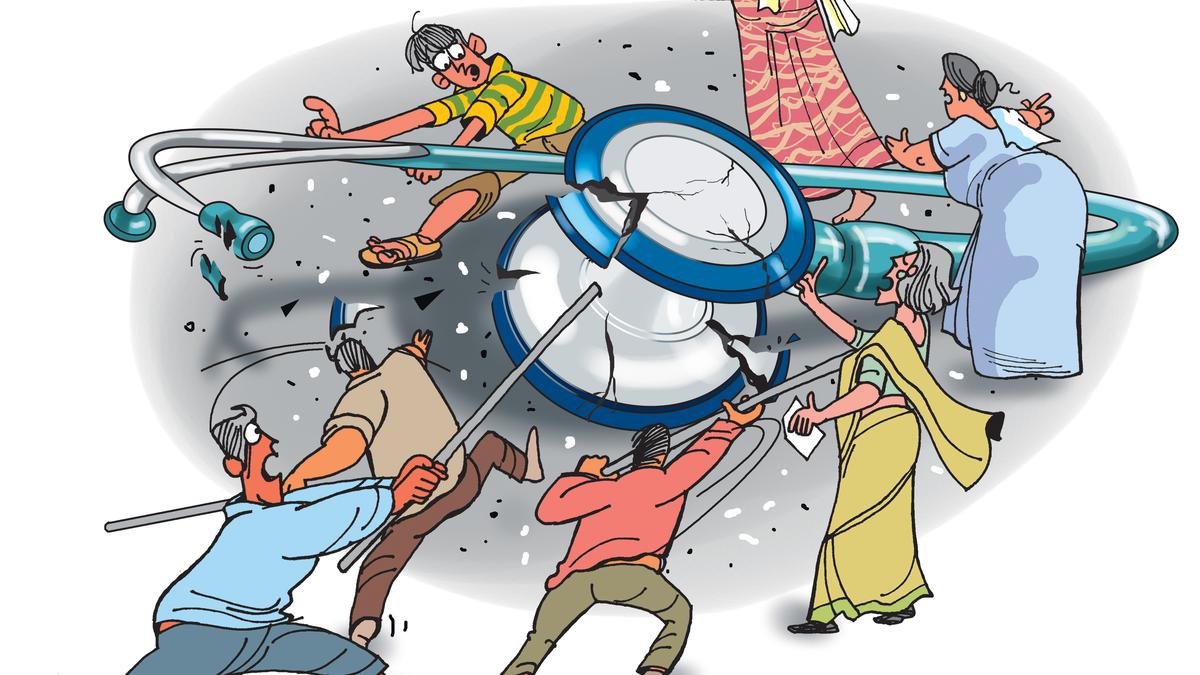Every July 1st, India observes National Doctor’s Day, to honour the legacy of Dr. Bidhan Chandra Roy. However, in recent years, this commemoration has become overshadowed by more visible policy events such as the roll-out of the Goods and Services Tax in 2017 and the implementation of the Bharatiya Nyaya Sanhita in 2024. This erosion of a symbolic space reserved for doctors is symptomatic of a deeper shift: a slow and complex erosion of the moral authority, public trust, and professional respect that physicians firmly held.
Epidemiological transition
This decline is not due to a failure of medicine; rather, it is due to its extraordinary success. To understand this shift, we must look beyond day-to-day grievances and dive deep into what public health scholar A. Omran (1971) described as the ‘epidemiological transition’. He describes how societies evolve in their disease patterns. As populations move from poverty to prosperity, the dominant health threats shift from infectious diseases and nutritional deficiencies to chronic, non-communicable diseases and eventually to a complex coexistence of both. Superimposed on this is the demographic transition, marked by falling birth and death rates, ageing populations, and shrinking family units. Together, these transitions radically redefine both the public’s expectation of medicine and the role of doctors.
In medieval times, the social role of the healer was mediated not by scientific inquiry but by moral authority, religious education, and ritual purity. Medical advice was as likely to come from clergy or spiritual figures as from trained physicians. That changed rapidly with the dawn of scientific breakthroughs during the Industrial Revolution. From Pasteur’s germ theory to Koch’s postulates and from the discovery of anaesthesia to the isolation of penicillin, medicine acquired a cloak of rationality and predictability. Before the Victorian era, surgeons had the same social standing as barbers. They were elevated to professional status when the knife, supported by chloroform and antisepsis, began to promise not agony but a cure. These were the fruits of an age driven by the curiosity of lone experimenters; public laboratories; and academic idealism. After these discoveries, doctors were seen as saviours and miracle workers, wielding tools that bent nature. But this golden era, too, was transitional.
Science becomes commerce
Stage four of the epidemiological transition (currently ongoing in many countries) is marked by delayed degenerative diseases. It has brought about a longer life but not a necessarily better one. The quality of life deteriorates even as costs escalate. In stage five, with emerging and re-emerging diseases (such as the COVID-19 pandemic), uncertainty rules again. Today, as India (and the world) faces this dual burden of infectious and chronic diseases, the expectations from medicine are more fraught than ever. Dengue persists alongside diabetes. Tuberculosis coexists with obesity-related disorders. While infections are largely controllable (at a cost), chronic diseases are relentless. The treatment of hypertension, depression, or autoimmune illnesses offers no clear endpoint.
There is no one-size-fits-all solution; instead, we are handed complex risk algorithms, lifestyle prescriptions that defy modern abundance, and therapies that offer more probability than certainty. In this climate, doctors are no longer seen as custodians of miraculous cures but as gatekeepers of advice that is often unaffordable, frequently incomprehensible, and occasionally ineffective. Statistics have replaced certainty. Protocols have replaced personalisation. A physician today must recommend less salt, less screen time, and less red meat, which contradicts the freedoms of the modern consumer life. It is hard to respect the messenger when the message feels like moral policing.
Caught in the crossfire
What worsens this fracture of public trust is that the discoveries once driven by individual scientific curiosity have become institutionalised commerce. The fruits of medicine are no longer shaped by academic purity but monetised by conglomerates, wrapped in patents, and rationed as commercial products. What began as a public good has become a market offering. Doctors serve as foot soldiers in an industrial healthcare complex, absorbing public frustration that cannot reach corporations or policymakers.
Lifestyle changes, now central to chronic disease care, require moral discipline that institutions cannot enforce. Political freedom and personal autonomy often clash with behavioural mandates. Obesity developed through constant ordering from food delivery apps, and insomnia developed through endless scrolling on social media, cannot be fixed by medicine. Doctors are left prescribing restraint in an age of indulgence and are expected to deliver miracle outcomes in a world where both disease and cure are entangled in sociopolitical contradictions beyond their control.
Modern medicine no longer offers the clarity or fairness the public expects. Until a new Pasteurian-like breakthrough emerges for treating non-communicable and degenerative diseases, doctors, caught between being healers, technicians, and scapegoats, must navigate a fractured moral landscape. Clinical encounters now resemble negotiations, with even advice met with suspicion. Doctors are not failing; they are operating in a world where societal expectations outpace what medicine can reliably deliver.
C. Aravinda is an academic and public health physician. Views are personal
Published – July 01, 2025 01:34 am IST
